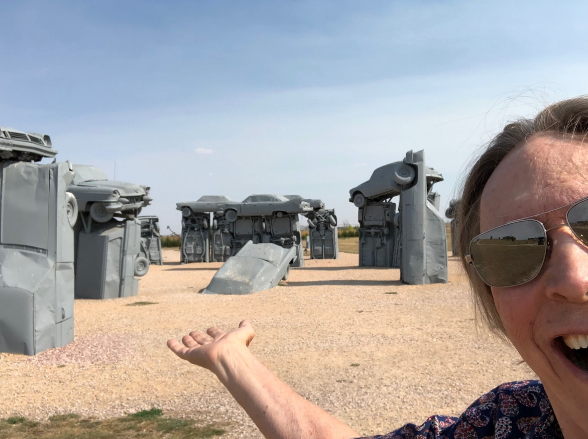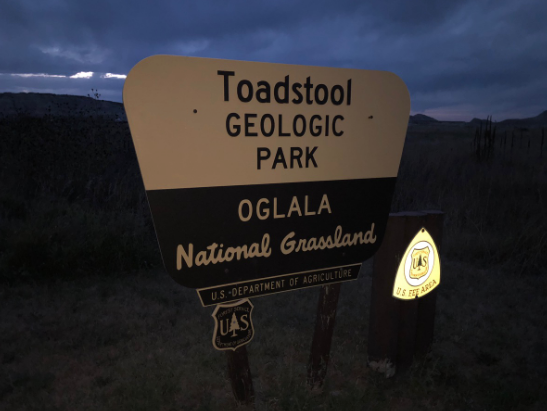I’m off to re-discover America, starting with Nebraska
(Not to be confused with Ogalalla or Ogala and certainly not with Ouagadougou.)
After traveling in 123 countries, I’ve decided it’s about time I got to know my own country really well. I’m going to travel a lot during the coming months and view this country through the same pair of eyes, and with the same detached curiosity, that I’ve employed around the globe. This time, I’ll be traveling in a motorhome, always searching for backroads that will lead me to the non-highway America.
One thing’s for sure. After dedicating the last decade to the adventure of moving to and living in a new country on a different continent each year, I’ve figured out the very best place to live. I’ve already done the research and have saved you the trouble. After year-long stints in Malaysia, Argentina, France, South Africa, Spain, etc. my conclusion – after careful consideration - is that the very best place to live, if you ask me, is the United States of America.
My global adventures are often rather random. Sometimes, I just pick a place to visit because its name sounds intriguing. Mainly because of its name, I once set out to visit “Ouagadougou,” the capital of Burkina-Faso in West Africa. The closest I could get, while maintaining any degree of personal safety, was Ouidah, Benin, the ancestral home of all voodoo. It’s the most spooky and depressing place I’ve ever visited. My local contacts advised me that if I continued toward Burkina-Faso, intent on reaching Ouagadougou, I’d surely be kidnapped by the Boko Haram terrorists.
So, rather than Ouagadougou, today I’m headed for Ogallala, Nebraska to rediscover America. I like the name of the place, and Nebraska could be seen as that ultimate representation of mid-(or some would say “real”) America. It’s a long way from Wall Street or Silicon Valley.
Don’t make my mistake and assume that Oglala is the same as Ogalalla or Ogallala. Now that I’ve visited, I realize that, while not quite as foreign as Burkina-Faso, they’re not the same.
Oglala is a native American name for one band of the Sioux nation, and there’s a national grassland that bears the name.
Perhaps the early settlers of Ogallala town just mispronounced or couldn’t quite spell the native name. Beyond that confusion, though, I find that the very same tourist brochure promoting an area attraction will print “Ogalalla” on one page, and “Ogallala” on the next. The place seems pretty confused about what to call itself. It’s also confused about what century this is. In a bid for tourists hunting for the “old west,” the town’s dressed itself up a bit, trying to look like the “Old West.”
The State of Nebraska’s not confused. It’s proud to be America’s heartland. Vast fields of corn, acres of hanging sunflower heads, and all those soybeans dominate the scenery.
I don’t know of another country, outside of Europe, that has done so much to employ digital technologies to make farming more efficient. As a result of my current middle-America travels, I’m learning a lot about what it takes to put food on the shelves at Whole Foods. Much of it grows here, in America’s heartland.
Nebraska is also a graveyard of settlements. It’s a tough place to live in once winter rolls around, and it seems that many of the early settlers just couldn’t take it. On backroads, well away from the Interstate highway, it’s quite common to come across homesteads that are simply abandoned. Lots of them. I even stumbled upon a theater, just out by itself with no houses around, occupied or not. It wasn’t even shuttered or fenced. I wonder when that piano played its last performance?
Once you hit a town, if you’re using backroads, the signs are likely to be hand painted and a little crooked. “Auto Repair” and “Haircut” places often bear signs that didn’t come from a computer-guided professional sign maker. The “Shady Rest Motel,” in its dilapidated state, may have its sign painted as crookedly as the “Grocery Mart”’s.
People here are very proud of “John Deere,” the tractor. One farmer I passed had carefully lined up all of his old dead John Deere tractors so you could see the progression of technology over his decades of farming. Another farmer had erected a little house for his most recently obsoleted tractor, and made sure that the doors facing the road were Plexiglas so that passers-by like me could also revere his John Deere treasure.
When I hear about “coal miners,” I usually picture a thin, sad-looking, soot-faced older man in Appalachia. Coal mining here in Nebraska is a different matter. It’s a mega-industry. I haven’t seen where all that coal comes from, and I can tell you that every day, I see dozens of thrumbling freight trains hauling mile-long chains of identical car-after-car coal transports headed south. It’s a big-scale business.
Speaking of trains, Nebraska’s “Bailey Yards” in North Platte is the world’s largest “classification yard.” The Golden Spike tower erected for visitors permits an expansive overview at the massive rail yard that processes over 150 of these mile-long trains every day!
Each train that’s hauling mixed freight moves its whole load of cars up a “hump” where the individual cars are automatically disconnected one-by-one and rolled down the sloping tracks that fan out to dozens of possible side rails. Computers control the process. It’s quite fascinating to see how trains are “built.” The computer sort of thinks, “Hmmm, this car’s barcode says it holds steel coil headed to Detroit. I’ll send it over to switch number 17 so it can link up with the Michigan-bound train leaving in an hour. Let her roll!”
I’m only partially-cultured, and now must shamefully admit that I didn’t realize that there’s a whole etiquette revolving around the placement of utensils on a dinner plate. Fortunately, Union Pacific’s historic records include a decoding of the utensil language in which I’m not fluent:
Nebraska offers other cultural highlights, to be sure. When I noticed the brown “Carhenge” sign pointing to a road paralleling my intended route, I couldn’t resist. I’d heard of it, and even visited the similarly bizarre Cadillac Ranch, outside of Amarillo. But I wanted to see Carhenge first hand.
One Nebraskan, who some would say was a little nutty, visited the real Stonehenge in England and decided to recreate it for the benefit of Nebraskans who may not have the opportunity to travel in Europe. There weren’t any giant slabs of granite or bluestone around, but there were plenty of auto hulks. So, he carefully arranged them just as in the original.
This attracted other artists who manipulated car cadavers into their own forms of automotive art. It’s become an artists’ scene right there by the roadside outside of Alliance, Nebraska. No admission is charged. Just art to react to. And the reactions vary a lot.
One yoga instructor must have thought it would be the perfect place to hold a class. So, there was a group of yoga students stretching and contorting their torsos, sometimes posing like the nearby pterodactyl one of the automotive artists had created from car frames.
On the other hand, I overheard a crew-cutted man exiting the site utter to his wife, “What a shame. Those cars could have been put to use at a scrapyard instead of letting some nutcase waste them by half-burying them.” I’m guessing that guy doesn’t visit many art museums. They’re such wastes! All that marble Michelangelo used up sculpting David in Florence when it could have been made into floor tiles.
I sometimes blindly follow “The Brown Sign Oracle.” Even on the interstates, when I see a brown sign pointing out a historical marker, or state park, or scenic overlook, I follow it. That’s what had led me to Carhenge in the first place. This is far easier to do on back roads, which seem more liberally sprinkled with Brown Signs and which don’t have limited exits to work around.
One oracular brown sign, on Nebraska road number 2, pointed toward “Toadstool Geologic Park.” That was alluring enough of a serendipitous draw for me to re-route my intended course. Geology is so real and enduring. Sure, politics or business may seem important for a year or a few decades. But it’s the makeup of our planet, and in fact our universe, that’s truly enduring and fascinating. Toadstool certainly offered an education.
There’s an almost “intellectual exercise” element to understanding geology. Whether you’re imagining how a glacier forms lateral moraines or deposits “erratics,” you’re really putting yourself in the “mind” of the glacier. You can visualize how it altered geography by imagining a re-enactment of its scouring and shrinking, acting as a transport conveyor and leaving behind more material than any fleet of feeble Caterpillar tractors could move.
At Toadstool, the odd rock formations are easily comprehensible. Over eons, sands of varying consistencies were laid down and subsequently compressed under the weight of the subsequent strata above them. Some of the layers are harder than others. In this location, relatively resistant sandstone overlaid weaker strata, which eroded as the winds abraded those weaker materials. Grain by grain, the sand below has been gradually blown away. Above it, though, is the harder sandstone, which isn’t so easily sanded down. So while the sand beneath the “cap” erodes, the harder layer above it teeters on what turns into a supportive column. It resembles a toadstool. That is until the column reaches a critical point of erosion and the mushroom-like cap topples.
The main theme I want to stress here is that few places on earth make available such fascinating displays, whether it’s old cars mimicking prehistoric rock assemblages or a national forest site with sturdy picnic tables and heavy-duty fire pits with cooking racks. What a country! In the USA, if a uniformed figure walks toward you at a National Park, it’s not a shakedown. She or he is there to help make sense of something for you and perhaps remind you that there’s a free informative slideshow on the benefits of forest fires this evening.

















